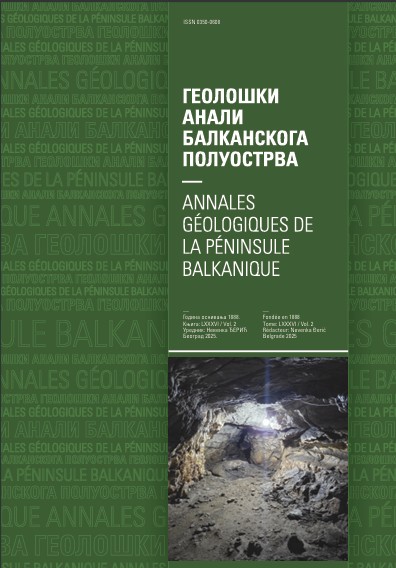Uticaj duboke cirkulacije hladnih karstnih voda u spoljašnjim Dinaridima na gustinu terestričnog toplotnog toka
The influence od deep cold karst water flow in the outer Dinarides on terrestrial heat flow density
Abstract
A reqional geothermal anomaly of very low heat flow densities, 15-30 mW/m2, is detected in the Outer Dinarides (Milivojević, 1992). Its extent is coincident with the karstland of about 20.000 km2 surfacearea. The karstland is made up of Mesozoic carbonate rocks 6-8 km thick, which are heavily karstified to a depth of 5 km. Karstification evolved through the geologic time in nine stages (Milovanović , 1964/65). Deep percolation of meteoric and flow of ground water have cooled the entire karstland of the Outer Dinarides. Karstification is a Recent process in the region, from the Paleogene, and more intensive in the last two thousand years since the depletion of the vegetation cover. Consequently, the measured densities of the terrestrial heat flow to the depth of 5 km in the Mesozoic carbonate complex are inconsistent with the actual densities deep in the Earth's crust. These densities should prevail beaneath the ground water flow in the carbonate rock complex, i.e. in the bedrock which is lacking effective water flow and heat convection causing the mentioned geothermal anomaly (Milivojević, 1993). Actual densities of the terrestrial heat flow in the bedrock of deposits should be 40—50 mW/m2 according to tests on a geothermal model of the Outer Dinarides crust segment.
Copyright (c) 1998 Geološki anali Balkanskoga poluostrva

This work is licensed under a Creative Commons Attribution 4.0 International License.










